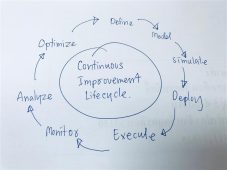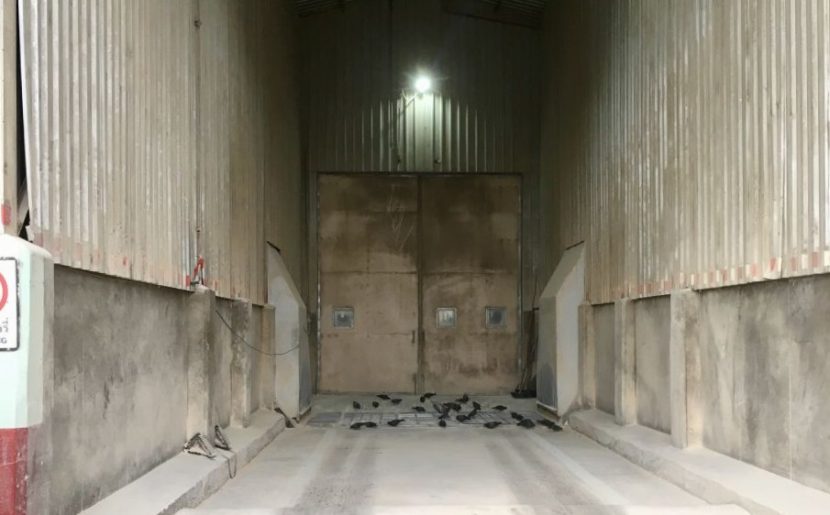Integrated Pest Management: Strategies to Protect Your Brand’s Reputation
By Zia Siddiqi
Pest management is critical to maintaining food safety and quality in food processing facilities. Pests in such environments can lead to contamination, regulatory non-compliance, financial losses, and damage to the facility’s brand reputation, especially in the world of social media.
Food processing and related industries, including transportation and storage, must adopt comprehensive and proactive preventative pest management strategies to ensure the highest hygiene and safety standards, thus protecting the public from foodborne illnesses
Pests pose significant risks to food processing facilities in several ways. Pests can carry pathogens, bacteria, and viruses that may contaminate food products, leading to foodborne illnesses. This can lead to product recalls, lawsuits, and loss of consumer trust, and you run the risk of your facility not meeting regulatory compliance. On the physical side of things, certain pests, such as rodents and termites, can cause structural damage to equipment and facilities.
With the implementation of FSMA requiring proactive preventative strategies for pest management, [IPM] has become the guiding principle.
Several types of pests are commonly found in food processing environments. Understanding their biology, behavior, and habitats can aid in designing and implementing effective control measures. Some of the key pests are:
- Rodents (rats and mice) are known for squeezing through small openings and contaminating food and surfaces with their waste. They also cause damage by gnawing on electrical wiring, packaging, and building structures.
- Insects include cockroaches, which are nocturnal pests that spread bacteria and viruses, and flies – for example, houseflies, phorid flies, fruit flies, and drain flies – that can carry pathogens and multiply very quickly in food waste areas.
- Stored product pests include beetles, moths, and weevils that infest stored grains, flour, and other raw materials.
- Birds can introduce contaminants through droppings, feathers, and nesting materials. They also pose a physical hazard by interfering with machinery.
Food processing facilities must adhere to strict regulatory guidelines to ensure pest management practices comply with industry standards. Key regulations include:
FDA Food Code: Requires food establishments to take proactive preventive measures against pests through proper sanitation and facility maintenance.
FSMA (Food Safety Modernization Act): Emphasizes preventive controls, requiring facilities to implement risk-based pest management programs for all potential pests that may enter the facility in the food processing system. The Foreign Supplier Verification Program (FSVP) rule, under FSMA, requires FSVP importers to verify that the food they import meets U.S. safety standards. FSVP importers are required to develop, maintain, and follow an FSVP for each food imported.
cGMPs (current Good Manufacturing Practices): Enforces cleanliness and pest control standards in food processing facilities.
HACCP (Hazard Analysis and Critical Control Points): This approach identifies and mitigates risks associated with pest contamination in the food production process and HARPC (Hazard Analysis Risk-Based Preventive Control Food Safety Plan). Establishing HARPC and HACCP protocols are key pillars when establishing necessary preventative controls outlined under the Food Safety Modernization Act and required for some, but not all, businesses that manufacture, process, or otherwise sell food for human consumption.
Integrated Pest Management (IPM) is a proactive approach that combines preventive measures, monitoring, and control methods to manage pest populations effectively. IPM has been around since 1972; however, with the implementation of FSMA requiring proactive preventative strategies for pest management, it has become the guiding principle of a pest management program. The key components of an IPM program include:
- Prevention
- Facility maintenance: Seal cracks, crevices, and entry points to prevent pest access.
- Proper waste management: Dispose of food waste regularly and use sealed trash containers.
- Sanitation practices: Clean food processing areas thoroughly to eliminate food residues that attract pests.
- Monitoring and Inspection
- Conduct regular inspections to detect early signs of pest activity and any future potential pests.
- Use monitoring tools such as sticky traps, pheromone traps, and electronic sensors to track pest movement.
- Maintain records of pest sightings, control measures, and corrective actions.
- Control Strategies
- Physical control: Use barriers, traps, and mechanical exclusion techniques to prevent pest entry.
- Biological control: Introduce natural predators or microbial agents to manage pest populations, where possible.
- Chemical control: Apply pesticides or insecticides in a targeted manner, ensuring compliance with safety regulations and minimizing risks to food products, starting with a pesticide formulation that is least toxic.
- Employee Training and Awareness
- Educate employees on pest control best practices, including proper food storage, waste disposal, and hygiene maintenance.
- Encourage staff to report pest sightings and promote a proactive pest management culture. IPM is a “joint venture” between the pest management service provider and the facility management. It is critical that all recommendations to eliminate conditions conducive to pest entry, survival, and harbor are eliminated as soon as possible.
- A PCQI (Preventive Control Qualified Individual) is required at each facility per FSMA. The PCQI’s role is to understand food safety hazards and put in place proper preventive control measures to minimize the risk factors.
- Professional Pest Management Services
- Engage licensed pest control professionals experienced in food processing plants to conduct routine inspections, implement advanced control measures, and follow recommendations to eliminate conditions favorable to pests.
- Ensure service providers comply with industry standards and use safe, approved pest control methods.
- The National Pest Management Association has published standards for pest management in food plants that outline the best practices.
- Regulatory Challenges
- The Environmental Protection Agency in the U.S. is committed to reviewing various pesticide active ingredients over a period of time, and the trend is that the use of various pesticides, especially rodenticides, is being restricted.
Technological advancements – such as automated monitoring systems, heat treatments, and biodegradable insecticides – have also come a long way, making pest control more data-driven and eco-friendly.
Effective proactive preventative pest management in food processing facilities is essential for maintaining food safety, regulatory compliance, and brand reputation. When implemented correctly, an IPM program will include prevention, monitoring, control, and employee training. Leveraging modern technology and professional pest control services further enhances the effectiveness of a facility’s pest management strategies.
Proactive and preventative pest control measures ensure that food processing facilities remain safe, compliant, and free from contamination risks. IPM in a food processing facility is a never-ending joint venture cycle between the pest management service provider and the facility management.
About the author:
Zia Siddiqi is a board-certified entomologist who is a technical consultant in urban and industrial pest management. He obtained his Ph. D. in entomology from North Carolina State University and has more than 40 years of experience in urban and industrial pest management, with a focus on food safety. He has worked across the globe and has designed several successful IPM programs. He led the first ISO 9000 certification of a pest management program in 1994, and designed Orkin’s food safety-based “Gold Medal” pest management program for the food industry.

-
 FeaturedRisk management
The Cost of a Breach: What a Cyberattack Could Mean for Food Safety Recalls
FeaturedRisk management
The Cost of a Breach: What a Cyberattack Could Mean for Food Safety Recalls
-
 FeaturedRisk management
Securing the Food Chain: How ISO/IEC 27001 Strengthens Cybersecurity
FeaturedRisk management
Securing the Food Chain: How ISO/IEC 27001 Strengthens Cybersecurity
-
 FeaturedRisk management
Revolutionizing Food Safety Training: Breaking Out of the “Check-the-Box” Mentality
FeaturedRisk management
Revolutionizing Food Safety Training: Breaking Out of the “Check-the-Box” Mentality
-
 GFSI Standards
GFSI 2025: Building Trust, Tech-Forward Solutions, and Global Unity in Food Safety
GFSI Standards
GFSI 2025: Building Trust, Tech-Forward Solutions, and Global Unity in Food Safety
-
 FeaturedFood Safety
Integrated Pest Management: Strategies to Protect Your Brand’s Reputation
FeaturedFood Safety
Integrated Pest Management: Strategies to Protect Your Brand’s Reputation
-
 FeaturedFood Safety Culture & Training
No Open Door Policy: Challenges That Impact Pest Control in Food Processing Plants
FeaturedFood Safety Culture & Training
No Open Door Policy: Challenges That Impact Pest Control in Food Processing Plants




